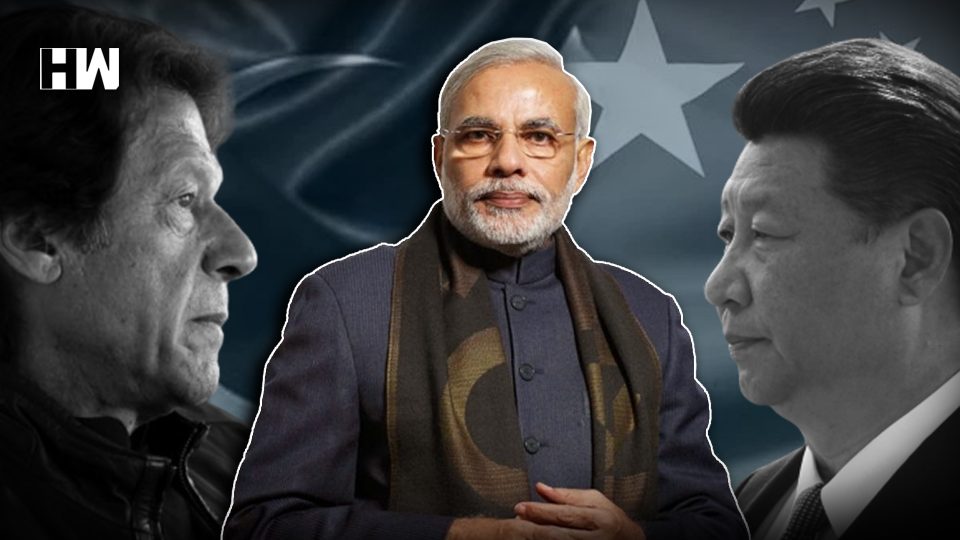PM Modi’s response and “Not-naming of China” principle seems a copout. It also shows the inconsistent response to the border clash along LAC and LOC.
It has been 15 days since the unfateful night of June 15 when 20 Indian soldiers were martyred and several injured in a violent face-off with Chinese soldiers in at Galwan valley in Eastern Ladakh. The violent face-off came almost a month after the border tensions began with the neighbouring country China over its intrusion into Indian territory. While the entire national conversation has revolved around the border clash with China since then, what came as an utter surprise was a conspicuous “not-naming” of the aggressor by those ruling the country.
PM Modi Breaks Silence On China Issue
The face-off with China began on May 5th. But the first time Prime Minister Modi broke his silence and spoke of the issue was on June 17th, two days after 20 Indian soldiers martyred. In his address to the nation on the issue, PM Modi said, “I would like to assure the nation that the sacrifice of our jawans will not be in vain. For us, the unity and sovereignty of the country is the most important…India wants peace but it is capable to give a befitting reply if instigated.” He further added that our soldiers have died while killing the enemy soldiers. Note, that Prime Minister Modi doesn’t mention the name of the country whose soldiers perpetrated the aggression.
“No Intrusion, No Post Captured”: PM Modi
After the address on June 17th, PM Modi has spoken only twice on the issue. Once after the all-party meeting on June 19th. After the meeting, PM Modi said that the government has given a free hand. However, in the same address, he made a statement saying “Neither is anyone inside our territory nor is any of our post captured”. This came even as media reports pointed out that the Indian military team had gone to Galwan valley flashpoint after Chinese soldiers erected structures despite an agreement over disengagement. Again, in this address too, PM Modi didn’t name China as the aggressor. Rather, his statement was used by Chinese media emphasising on his statement saying “No one intruded in Indian Territory”.
After his statement led to widespread confusion and outcry, the Prime Minister’s Office clarified and said that his statement was focused on the events of 15 June at Galwan.
PM’s Mann Ki Baat But No Mention of China
The third time PM Modi spoke on the Ladakh situation was on Sunday, June 26th. PM Modi said India knows how to be friends, but also knows how to look at its enemies in the eye. He highlighted that India and its citizens will not forget the gallant nature and valour of its armed forces. He saluted the army men for their sacrifices in Galwan Valley and said that the valiant armed personnel stationed in those frigid zones of Himalayas did not allow the intruders to tarnish the “glory of Mother India”. Again, in the half-hour-long Mann Ki Baat PM Modi kept referring to Galwan incident and bravery of Indian soldiers but didn’t name China.
On Monday, Indian govt banned 59 Apps over security and privacy concerns. While all of the apps added to the list are Chinese apps, the Ministry of Information and Technology order didn’t overtly mention that it is banning the “Chinese” apps.
PM Modi’s response and “Not-naming of China” principle while dealing with the border issue seems a copout. It also shows the leadership’s inconsistent response to border clash along Line of Control (India’s border with Pakistan) and Line of Actual Control (India’s Border with China). If compared, there is a stark difference between the response of PM Modi after Pulwama attack in February 2019, when 40 CRPF soldiers were martyred in a deadly terrorist attack by Jaish-e-Mohammed and response after the killing of 20 Indian soldiers during a violent face-off with China’s PLA.
Take for example this statement: “Those of our enemies sitting in Pakistan think that attack like Pulwama will have an adverse impact on our country, But I want to remind them, you’ve seen destruction due to path you’ve chosen.” This statement by PM Modi came a day after 14 February Pulwama attack. In the subsequent days, he addressed more than 5 campaign rallies in which he not only mentioned Pulwama but also gave a strong warning to Pakistan.
PM Modi’s Response After Pulwama Attack and Balakot Airstrike
On 26th February, within two weeks of Pulwama attack, Indian Air Force carried out airstrike destroying terrorist launch pads in Pakistan’s Balakot. Speaking about the strike, in an Ahmedabad rally PM Modi reiterated the “Ghar mein Ghuss Ke Maarenge” stand which later also became a slogan for BJP’s Lok Sabha campaign focused on national security.
Criticizing the opposition leaders, he said that their statements become headlines in Pakistani newspapers. Ironically enough, his own statement claiming “No Intrusion” was extensively used by Chinese media to claim that China is carrying out activities within its borders. Later, it also claimed sovereignty over entire Galwan region.
While the leadership still scrambles to find words to name China as the aggressor, one can’t help but remember PM Modi’s statement from 2019 speech where he said he can’t wait longer to retaliate. Maybe the rhetoric of 56-inch-chest and Laal Ankh is only reserved for Pakistan.
As an independent media platform, we do not take advertisements from governments and corporate houses. It is you, our readers, who have supported us on our journey to do honest and unbiased journalism. Please contribute, so that we can continue to do the same in future.

